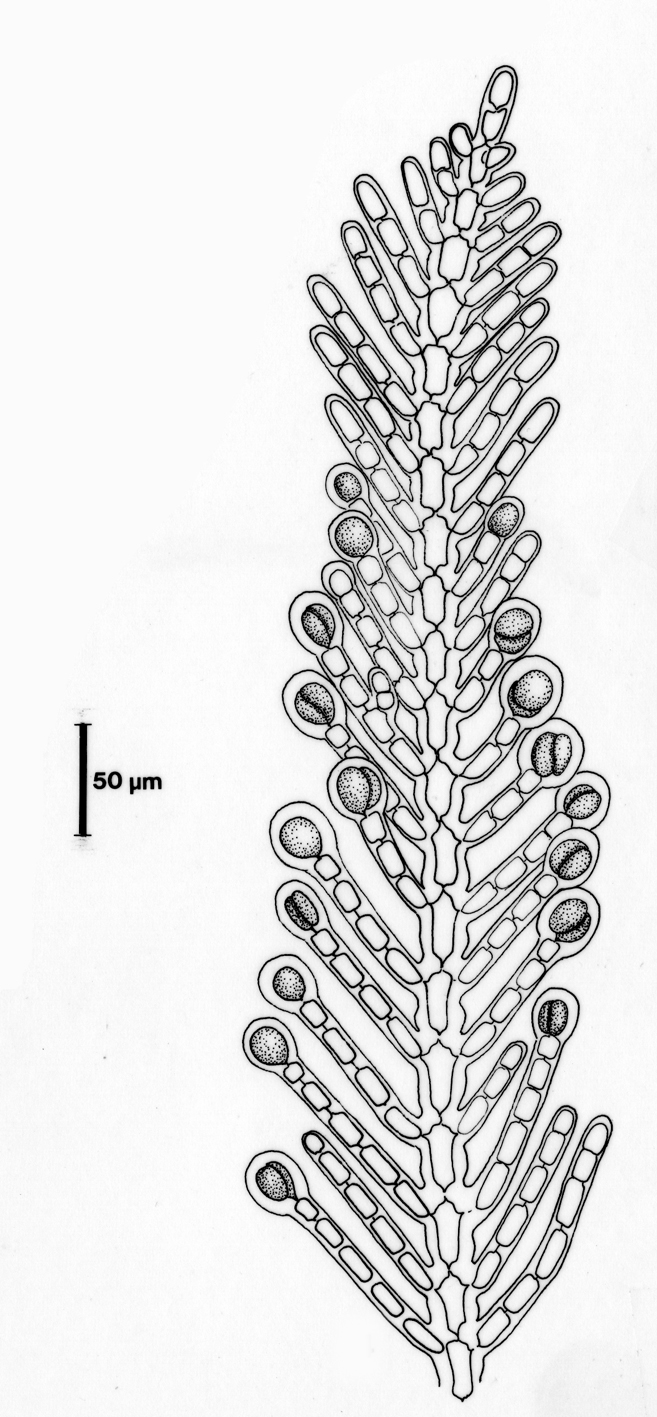Seaweeds of the South African South Coast


Order Ceramiales
Family Wrangeliaceae
Gymnothamnion elegans var. bisporum Stegenga 1986: 88-90, pl. 30
Differing from the typical variety in reaching only 2 mm in height, the ultimate branchlets being shorter (to 10 cells as opposed to up to 20 cells in the typical variety), the smaller cell diameters (prostrate axes to 20 µm, final branchlets up to 12 µm) and the possession of bisporangia rather than tetrasporangia, measuring at the most ca. 35 x 33,5 µm. The sporangia are usually terminal on the last order branchlets and divided in the longitudinal or more skew direction. There are no sexual organs known from this variety. The earlier mentioned (Stegenga et al. 1997) branching from the prostrate axis every other segment appears to be more varied and branching every third segment is not unusual.
Collections, ecology and regional distribution
Recorded from the Cape Peninsula to East London (16-41). Found at a much deeper level on the shore than the typical variety, even to several meters below low-tide level, usually epiphytic on large seaweeds.
World distribution: So far, it is distinguished as a South African variety only, but it is somewhat rarer than the typical variety.
Type locality: Muizenberg, False Bay, Cape Province, South Africa (Stegenga 1986).

Gymnothamnion elegans var bisporum. Erect axis with bisporangia. Reproduced from Stegenga et al. (1997).
References Gymnothamnion elegans var bisporum
Stegenga, H. 1986. The Ceramiaceae (excl. Ceramium) (Rhodophyta) of the South West Cape Province, South Africa. Bibliotheca Phycologica 74: 1-149, 1 table, 51 plates.
Stegenga, H., Bolton, J.J. & R. J. Anderson. 1997. Seaweeds of the South African west coast. Contributions from the Bolus Herbarium 18: 655 pp.
Cite this record as:
Anderson RJ, Stegenga H, Bolton JJ. 2016. Seaweeds of the South African South Coast.
World Wide Web electronic publication, University of Cape Town, http://southafrseaweeds.uct.ac.za; Accessed on 07 January 2026.